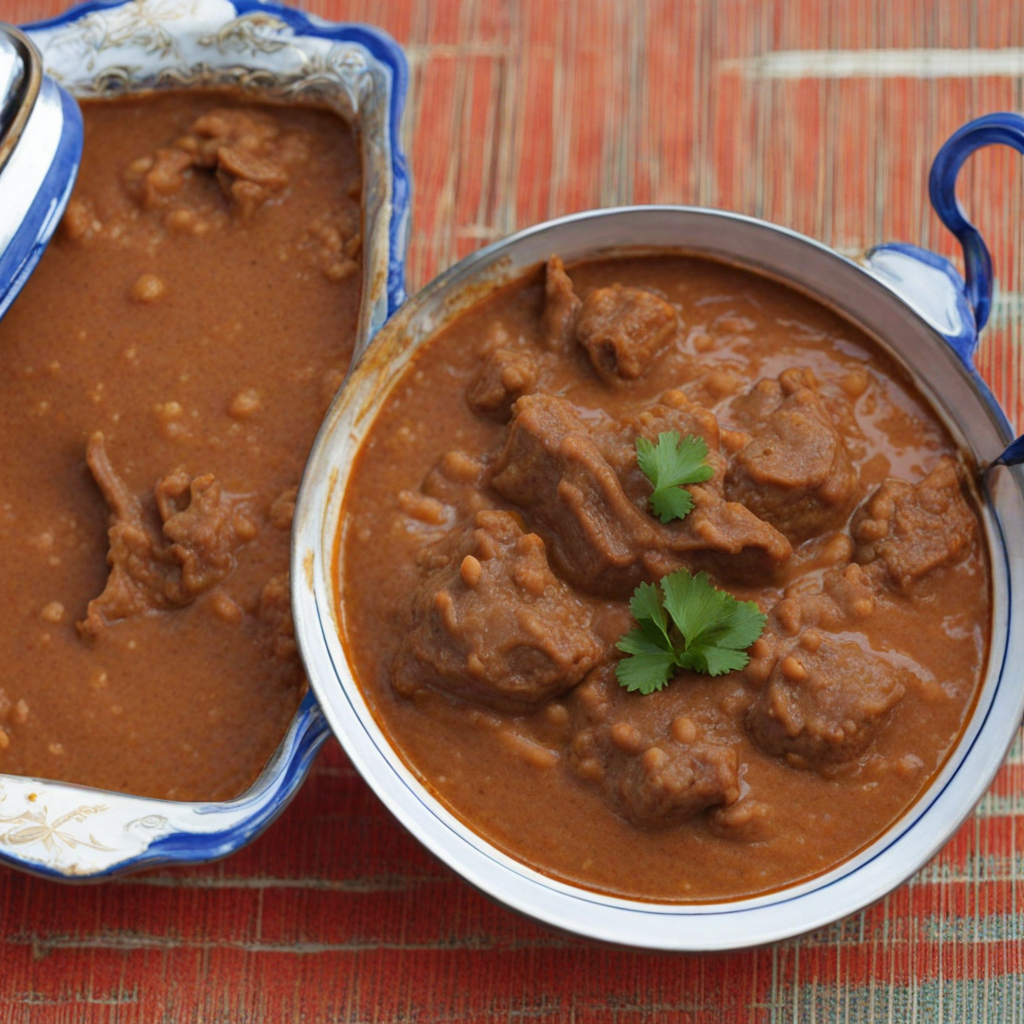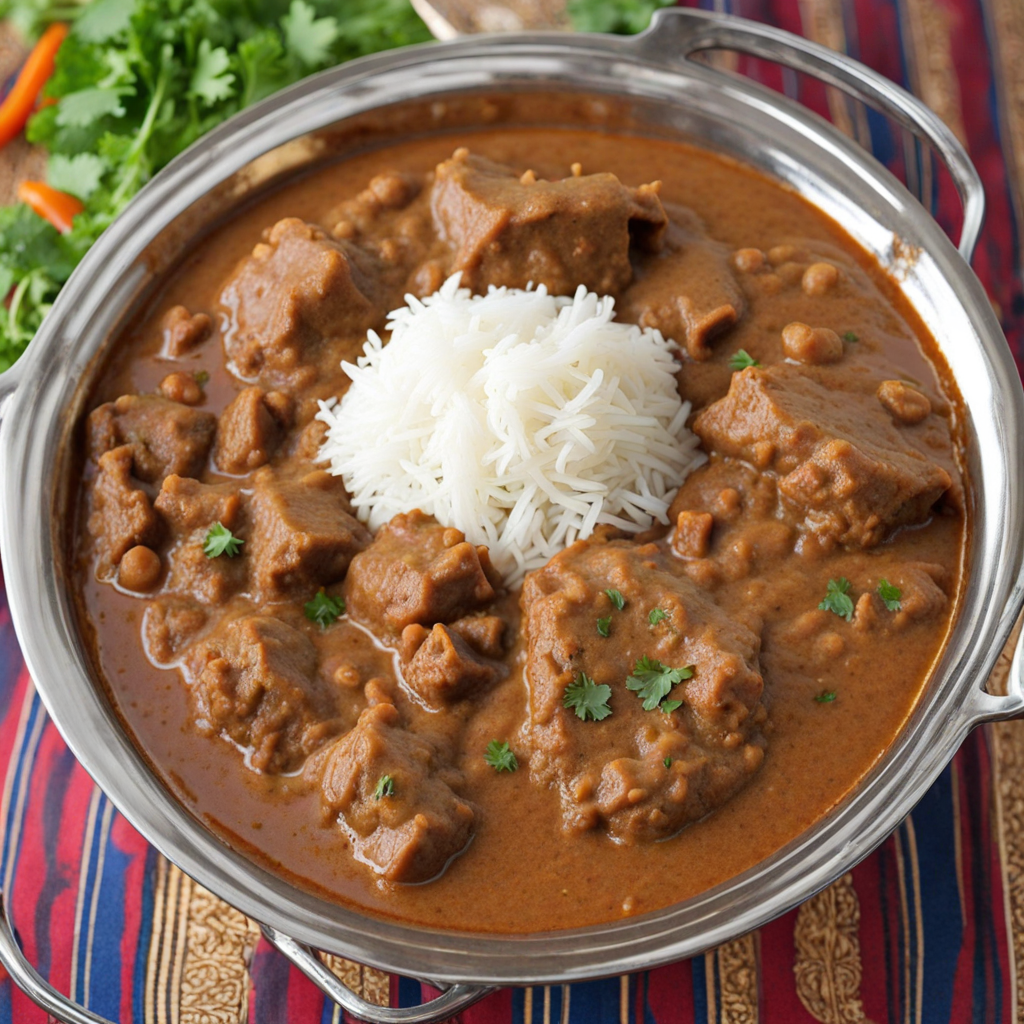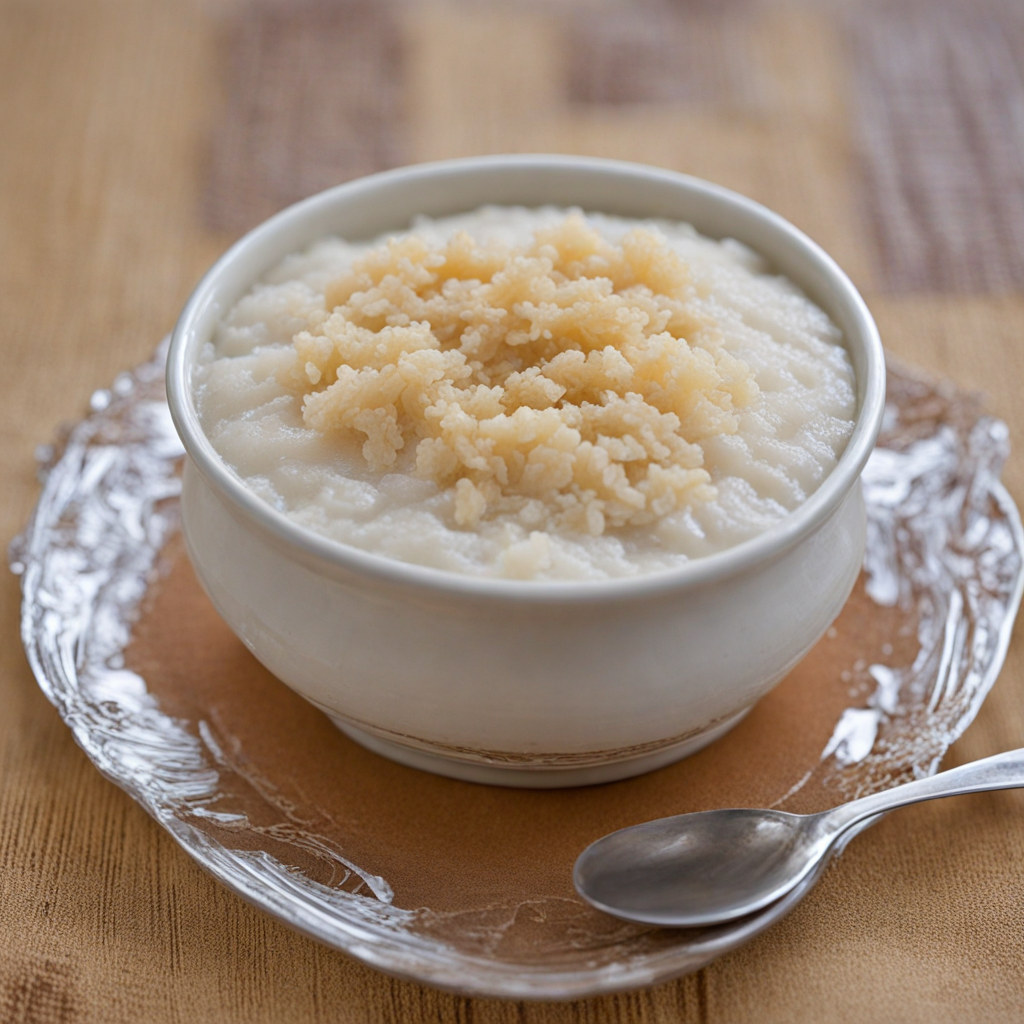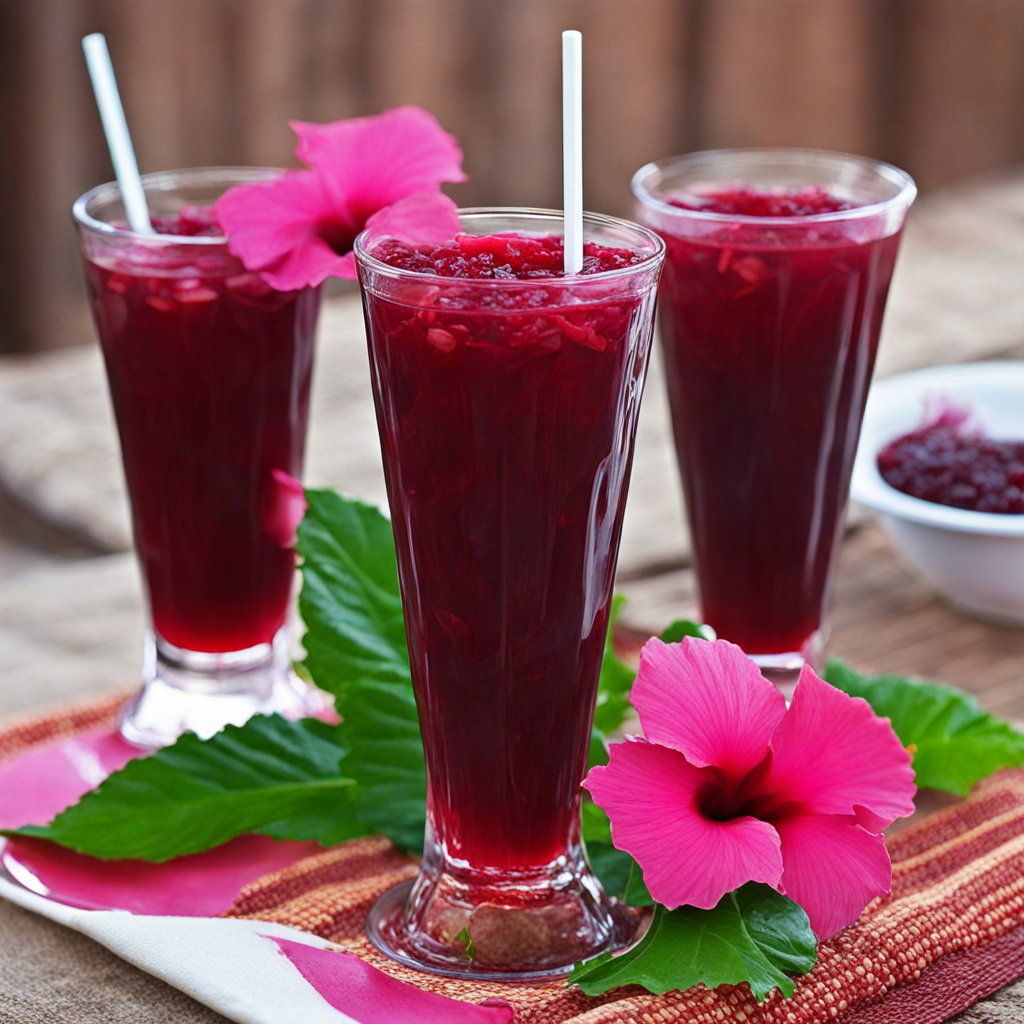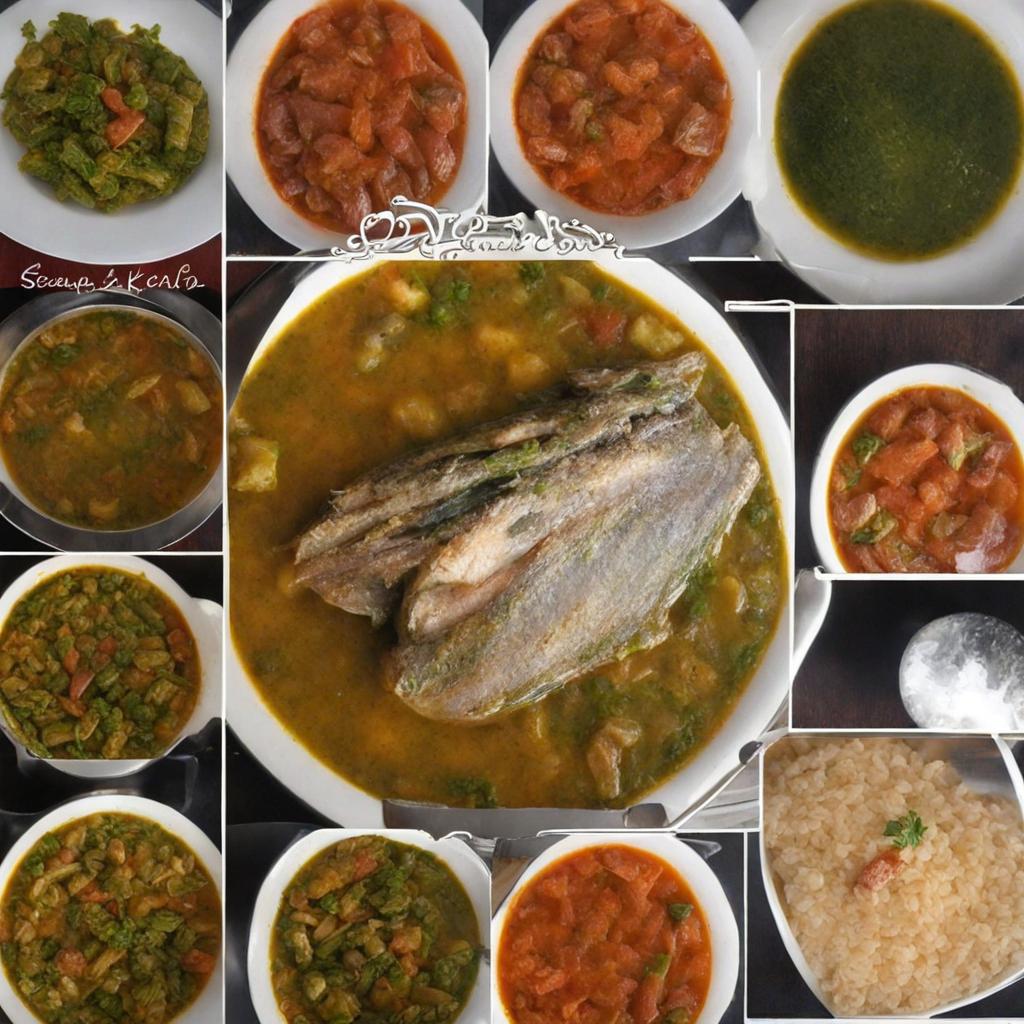Mafe
Mafe, also known as groundnut stew, is a traditional Senegalese dish that captivates the palate with its rich, nutty flavors and delightful textures. The heart of Mafe lies in its creamy peanut sauce, which is made by simmering finely ground peanuts with a medley of spices, creating a luscious base that coats the other ingredients. This sauce is typically enhanced with tomatoes, onions, and a variety of spices such as garlic, ginger, and chili, infusing the dish with a warm, aromatic essence that invites you to take a second bite. The combination of these elements results in a hearty stew that is both comforting and satisfying, perfect for any meal of the day. Often, Mafe is prepared with a variety of proteins, including chicken, beef, or lamb, which are simmered until tender and infused with the nutty sauce. Vegetables such as carrots, sweet potatoes, and greens often accompany the dish, adding both color and nutrition. The slow-cooking process allows the flavors to meld beautifully, ensuring that every spoonful is a burst of savory goodness. The balance of protein, vegetables, and the decadent peanut sauce creates a nourishing dish that is as wholesome as it is delicious. Served traditionally with a side of rice, Mafe is often enjoyed communally, making it a centerpiece for gatherings and family meals. The act of sharing this dish enhances its appeal, as the vibrant flavors and aromas fill the air, inviting everyone to partake in the experience. Whether you are new to Senegalese cuisine or looking to expand your culinary horizons, Mafe offers a unique taste journey that showcases the heart and soul of Senegalese cooking, blending simplicity with profound flavor in every bowl.
How It Became This Dish
The History of Maafe: A Culinary Gem of Senegal Maafe, a rich and hearty stew, holds a significant place in the culinary landscape of Senegal and the broader West African region. This dish, characterized by its creamy peanut sauce and an array of ingredients, is a testament to the rich cultural tapestry and agricultural abundance of the area. To understand the allure of Maafe, we must delve into its origins, cultural significance, and evolution through time. #### Origins of Maafe The roots of Maafe can be traced back to the ancient agricultural practices of the Senegambian region, where peanuts, or groundnuts, were first domesticated. Archaeological evidence suggests that peanuts were cultivated in West Africa as early as the 15th century, making them a staple of the local diet. The introduction of peanuts into the culinary repertoire of the region was transformative, providing a rich source of protein and healthy fats. In terms of etymology, "Maafe" comes from the Wolof language, one of the predominant languages in Senegal. It is believed that the dish was initially prepared by the Mandinka people, who are among the many ethnic groups in Senegal. The name reflects the dish's cultural significance, as food in many African societies is often more than sustenance; it embodies history, tradition, and community. #### Cultural Significance Maafe is more than just a dish; it is a symbol of hospitality and community in Senegalese culture. Traditionally, it is served during special occasions, family gatherings, and festive celebrations. The preparation of Maafe often involves the participation of multiple family members, echoing the communal spirit that is a hallmark of Senegalese life. The act of cooking together strengthens familial bonds and fosters social connections. In the context of Senegalese society, the dish transcends class and geography. While it is a beloved staple in rural households, it has also found its way into urban cuisine, where it is enjoyed in restaurants and enjoyed by people of all backgrounds. The dish exemplifies the Senegalese value of sharing; it is typically served in a communal bowl where diners gather around to enjoy it together, reinforcing the notion of unity and togetherness. Peanuts, the primary ingredient in Maafe, are also culturally significant. They are not only a dietary staple but also hold economic importance. Senegal is one of the largest producers of peanuts in Africa, and their cultivation is a vital part of the country's agricultural economy. The prominence of peanuts in Maafe reflects local agricultural practices and the integration of indigenous ingredients into traditional recipes. #### Development Over Time The evolution of Maafe reflects broader historical changes in Senegal and West Africa. With the arrival of European colonizers in the 19th century, new ingredients were introduced to the region, such as tomatoes, onions, and various spices. These ingredients have since become integral to the modern iteration of Maafe. The adaptability of the dish is one of its most remarkable features; it can be made with a variety of proteins, including chicken, beef, lamb, or even fish, depending on regional preferences and availability. In the 20th century, as urbanization increased and Senegalese society became more interconnected, Maafe began to gain international recognition. The dish started to appear in cookbooks and culinary events, showcasing the vibrant flavors of Senegal to a global audience. The diaspora communities in Europe and North America have also played a crucial role in popularizing Maafe, with restaurants and home kitchens serving this dish as a way to maintain cultural heritage. The process of making Maafe has also seen adaptations over time. Traditional methods may involve slow-cooking the stew over an open flame, allowing the flavors to meld beautifully. However, modern conveniences such as pressure cookers and blenders have streamlined the preparation process, making it accessible to busy home cooks while maintaining the essence of the dish. #### Ingredients and Preparation At its core, Maafe consists of a protein of choice, a base of onions and tomatoes, and the all-important peanut butter or ground peanuts. The dish begins with sautéing onions and garlic in oil, followed by the addition of chopped tomatoes and spices such as ginger, chili peppers, and sometimes even a pinch of salt. The choice of protein—beef, chicken, or lamb—is then added and simmered until tender. The crowning glory of Maafe is the peanut sauce. Once the meat is cooked, a generous amount of peanut butter is stirred in, along with water to create a rich, creamy consistency. The stew is left to simmer, allowing the flavors to meld and the sauce to thicken. It is typically served with a side of rice or millet, which helps to balance the richness of the sauce. #### Maafe in Contemporary Senegal Today, Maafe remains a beloved dish in Senegal and continues to evolve. Chefs are experimenting with new variations, incorporating ingredients such as sweet potatoes, vegetables, and even alternative proteins like tofu to cater to changing dietary preferences and global trends. The rise of health consciousness has led to an increased focus on using fresh, organic ingredients, further enriching the dish's heritage. In addition to its culinary evolution, Maafe is also celebrated in cultural expressions such as art and literature. It appears in songs and stories that highlight the importance of food in nurturing relationships and preserving cultural identity. Food festivals often feature Maafe, showcasing the dish to a wider audience and promoting Senegalese cuisine as a vital part of the nation’s cultural heritage. #### Conclusion Maafe is more than just a meal; it is a narrative woven into the fabric of Senegalese history and culture. Its journey from humble beginnings to becoming a beloved dish enjoyed by many speaks to the resilience and adaptability of culinary traditions. As it continues to evolve, Maafe remains a powerful symbol of community, hospitality, and the rich agricultural heritage of Senegal, inviting people to gather around the table and share in the warmth of this cherished dish. Whether enjoyed in a family home, a bustling restaurant, or at a festive celebration, Maafe is a celebration of life, culture, and the enduring power of food.
You may like
Discover local flavors from Senegal


